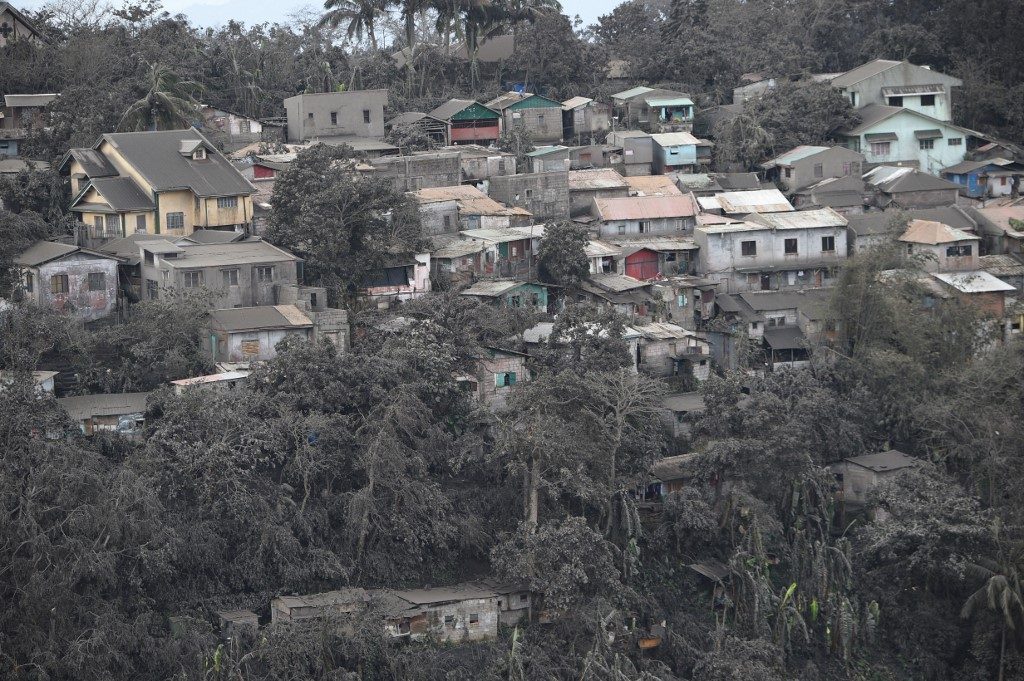SUMMARY
This is AI generated summarization, which may have errors. For context, always refer to the full article.

MANILA, Philippines – Senate President Vicente Sotto III has proposed cloud seeding “to solve” the ashfall problem in parts of Luzon due to the Taal Volcano eruption, but experts said this should be studied well amid concerns about the proposal.
Sotto told reporters on Monday night, January 13, that “water solves the ashfall debris” coming from Taal Volcano, which is currenty on Alert Level 4, as it continuously spewed lava fountains. (READ: How to stay safe during volcanic ashfall)
Cloud seeding is a man-made intervention which involves putting crystal into clouds to cause rain.
The Senate President said he had informed Senator Christopher “Bong” Go and Executive Secretary Salvador Medialdea about his idea. He added that the Philippine Air Force was aware of his suggestion, and was currently studying it.
What happens when it rains? The ashfall, currently affecting parts of Batangas, Cavite, Laguna, Rizal, and Metro Manila, consists of rock fragments, minerals, and glass roughly the size of sand grains.
According to a global network of scientists, the International Volcanic Health Hazard Network, freshly fallen acid particles “can have acid coatings” that may irritate the lungs and eyes.
When ashfall is mixed with rain, the acid coating is removed, and may then pollute water sources and damage crops, IVHHN said.
Apart from that, the rain can turn the volcanic ash “into a slurry of slippery mud,” the United States Geological Survey (USGS) said. In places where there is heavy ashfall, rain mixed with ash can cause roofs to collapse under the additional weight brought by the water, USGS said.
Why is further study needed? Philippine Institute of Volcanology and Seismology director and Science Undersecretary Renato Solidum said in a briefing on Tuesday, January 14 that the proposal needs to be studied.
“That has to be studied. In general, cloud [seeding] is a good idea, but how to operationalize it, you really have to study,” Solidum said, when asked about Sotto’s proposal.
He said the study should include identifying the ideal outcome in terms of the volume of rain to be produced and where it would fall.
Solidum also said that there was also the threat of flood and lahar, a mixture of water and rocks from volcano like what happened in areas near Mount Pinatubo during the 1991 eruption.
“Kung titingnan mabuti, obviously kung masyadong maraming tubig, eh mawa-wash down ‘yung abo sa gilid, at may banta ng flood, or lahar, ‘yung mga abo,” Solidum said.
(If you look at it closely, obviously, if there’s a lot of water, the ash would be washed down at the side, and there’s the threat of flood, or lahar.)
Is cloud seeding even feasible? Mahar Lagmay, University of the Philippine Resilience Institute executive director, told Rappler that cloud seeding is not exactly a good idea.
“Baka bumagsak ang eroplano dahil sa ash, which melts kapag mainit ang propeller [or] jet engine,” Lagmay said.
(The plane might crash because of the ash, which melts when propeller or jet engine is hot.)
Some flights were canceled on Sunday, January 14, following Taal Volcano’s activity as clouds carrying volcanic ash directly affected the air traffic ways. – Rappler.com
Add a comment
How does this make you feel?
There are no comments yet. Add your comment to start the conversation.